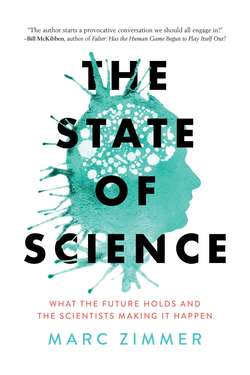Читать книгу The State of Science - Marc Zimmer - Страница 26
На сайте Литреса книга снята с продажи.
Community Lab Spaces
ОглавлениеGenspace is the first nonprofit community biotech lab established in the United States. It was started in 2009 in Brooklyn, New York. The idea for the project came from Ellen Jorgensen, who wanted a lab space that was open to everyone and would foster innovation, diversify biotechnology, and establish a space in which people could “take classes and putter around in the lab in a very open friendly atmosphere.”[15] The time was right. There was a pool of disenfranchised graduate students, artists with an interest in using science as their new canvas, and highly skilled professionals with ideas and projects they couldn’t pursue in their day jobs, all interested in the concept of a community lab. The 2008 recession had led to the downsizing and collapse of small biotech start-ups, which forced them to sell their equipment on eBay. Jorgensen, a molecular biologist with a PhD from New York University who has had various positions in the biotech industry, put out a call for like-minded people. They met in science journalist David Grushkin’s apartment to talk about biotechnology, the need for lab space, and “to learn more about bioengineering by inserting a gene into bacteria that caused it to glow green.”[16]
From that group Genspace slowly grew. In the core group that founded Genspace was Nurit Bar-Shai, an artist. She was interested in GFP and contacted me to talk about fluorescent proteins. We emailed back and forth, and I gave a few talks at the Genspace labs, which are located on an upper floor in the Metropolitan Exchange Building, a block away from the Brooklyn Academy of Music (BAM). The first time I went I got off on the wrong floor. One of the people in the building gave me a brief tour on the way to the Genspace labs. The owner of the Metropolitan Exchange, Al Attara, has attracted a variety of entrepreneurs to the building with cheap rent, communal kitchens, and a symbiotic workplace. This was the perfect location for a community biotech lab. The open-plan floors of this old bank building were packed with walls of old equipment separating groups of desks occupied by young architects, artists, and biotechnologists all bustling with energy and ideas. Al, the building’s owner, is not happy with the building’s name. “I want to rename it the Brooklyn Arts and Design Arena—or BADA. Since we’re in the BAM District, it’ll be BADA-BAM,” he said in a New York Times article.[17] BADA-BAM would certainly capture the spirit of Genspace’s energy. Most of the community lab’s members are not scientists, and a lot of the energy is devoted to teaching and training members and students from local underfunded high schools. The lab only qualifies as a biosafety I lab, which means it is suitable for handling life forms that present no risk to humans.
From its very inception, Genspace and its founders have suffered from negative public misperceptions. Ellen Jorgensen recalls her first interactions with the press after forming Genspace: “The more we talked about how great it was to increase science literacy, the more they wanted to talk about us creating the next Frankenstein.”[18] These fears that DIY biologists (DIYbio) or biohackers will be able to able to cause themselves or even others harm have grown, particularly since the advent and commercial distribution of CRISPR kits. In 2013, David Grushkin and Piers Millet, deputy head of the Biological Weapons Convention Implementation Support Unit of the United Nations, did a survey of DIY biologists.[19] They found that most work together, and only 8 percent of the respondents worked alone in their own home labs. Biohackers are very interested in idea sharing, open-sourcing techniques, and transparency. Community labs are sprouting up all over the country, and most cooperate with authorities to ensure that they have no accidents and that their facilities aren’t abused.[20] However, biohackers have a large variety of motivations. Medical doctors and biochemists want to examine diseases that are of personal importance to them or their families; retired scientists want to continue their research; and bankers and software engineers switch careers to being transgenic artists, cyberpunks, and anarchic biohackers.
Biohacking provides a research space for high-risk projects that aren’t always designed to lead to tenure or new products. Furthermore, it has allowed wannabe scientists, graduate students, transgenic artists, doctors, teachers, and industrial researchers to try out their own ideas in their own spaces. In garages and scientific maker spaces, individuals are altering their own genetic codes, building things, making cells glow, and democratizing science.
